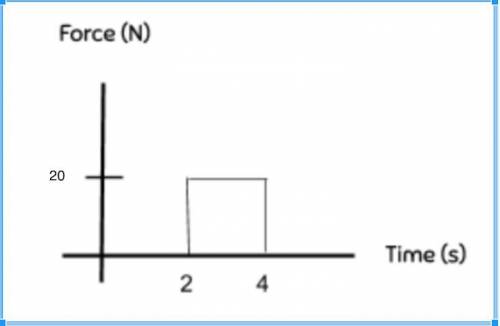
Physics, 24.02.2021 20:30 donuteatingcat
An 8 kg mass initially at rest experiences the impulse shown in the following graph. Determine the final velocity of the 8 kg mass.


Answers: 3


Other questions on the subject: Physics

Physics, 22.06.2019 00:20, mckinley2006
Zeros that follow non-zeros numbers and are also to the right of a decimal point are significant
Answers: 2

Physics, 22.06.2019 04:00, NateTheBeast12
It can take some of those large , industrial vehicles up to feet to stop when traveling only 60 mph, and therefore , you shoukd be mindful to not be jn the traffic right in front of them a. 100 feet b. 200 feet c. 335 feet d. 425 feet
Answers: 1

Physics, 22.06.2019 11:30, alexandroperez13
With the simplified model of the eye, what corrective lens (specified by focal length as measured in air) would be needed to enable a person underwater to focus an infinitely distant object? (be careful-the focal length of a lens underwater is not the same as in air! assume that the corrective lens has a refractive index of 1.62 and that the lens is used in eyeglasses, not goggles, so there is water on both sides of the lens. assume that the eyeglasses are 1.90
Answers: 1

Physics, 22.06.2019 17:00, jenn8055
In the future, people will only enjoy one sport: electrodisc. in this sport, you gain points when you cause metallic discs hovering on a field to exchange charge. you are an electrodisc player playing the popular four disc variant. the disks have charges of qa = −8.0 µc, qb = −2.0 µc, qc = +5.0 µc, and qd = +12.0 µc. (1) you bring two disks together and then separate them. you measure the resulting charge of these two disks and find that it is +5.0 µc per disk. which two disks did you bring together? (a) a and b (b) a and c (c)a and d (d)b and c(e) b and d (f) c and d. (2) you bring three disks together and then separate them. you measure the resulting charge of these three disks and find that it is +3.0 µc per disk. which three disks did you bring together? a, b, and c (a) a, b, and d (c) a, c, and d (d) b, c, and d. (3) given the resulting charge of each disk measured in (b) is +3.0 µc, how many electrons would you need to add to a disk of this charge to electrically neutralize it? electrons
Answers: 3
You know the right answer?
An 8 kg mass initially at rest experiences the impulse shown in the following graph. Determine the f...
Questions in other subjects:


Mathematics, 12.05.2021 01:10


Mathematics, 12.05.2021 01:10

Mathematics, 12.05.2021 01:10

English, 12.05.2021 01:10






